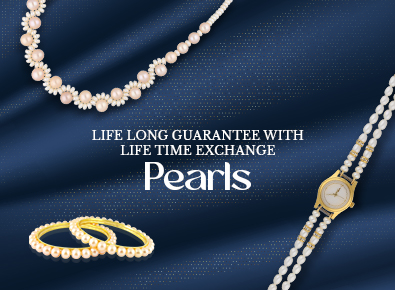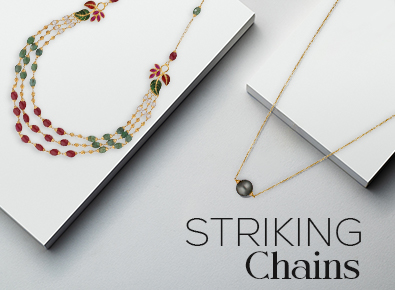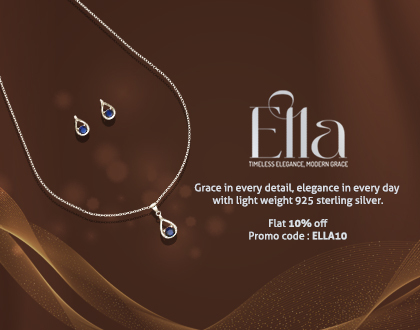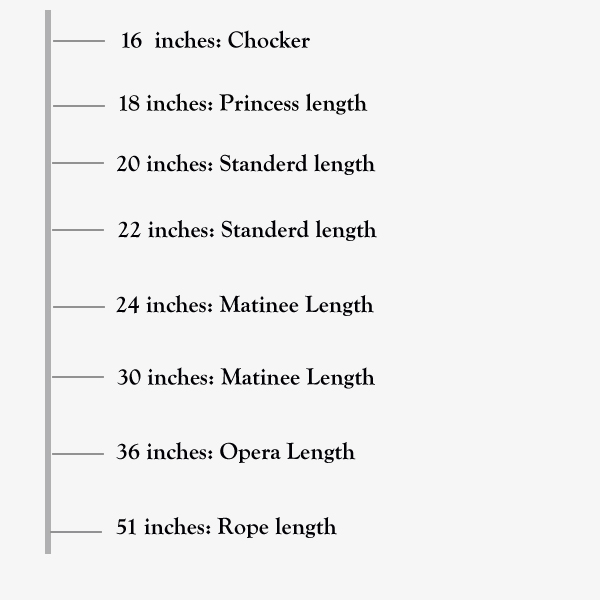What are Pearls?
Built from hexagonal aragonite crystals of calcium carbonate, Pearls are formed in Clams, Oysters and Mussels, and are found in many parts of the world. They are usually white, sometimes with a creamy or pinkish tinge, but may be tinted with yellow, green, blue, brown, or black. Black pearls are often highly valued because of their rarity.
Pearls are either natural or cultured. Natural Pearls are harvested from the ‘wild’, while Cultured Pearls are cultivated in ‘Pearl farms’. Pearls are harvested from the sea bed (Saltwater Pearls) and Inland water bodies (Freshwater Pearls) – this was the primary source of all pearls till the fag end of the 1800s.
“A Thing of Beauty is a Joy Forever…”
Ever wondered why such idioms are called ‘Pearls’ of wisdom? The story of our passion for pearls stretches into antiquity; in fact, pearls were Humankind’s most valuable gems till the 19th Century. Wars were averted, peace brokered and wisdom and beauty were measured with these wholly-formed gemstones. Art, décor and religion saw newfound expression with them. Pearls are known to have informed many branches of human knowledge – gemmology, anthropology, mineralogy, ecology and biology. Our attraction to pearl is layered with great drama, suffering and artistic nuances.
TYPES OF PEARLS
The Past
The Present
- The year was 41 B.C. Mark Anthony, a member of the Roman Triumvirate, was eyeing Egypt to finance his plans of conquest. In one of the most celebrated banquets documented in literature,
- Cleopatra, the Queen of Egypt, convinces him that Egypt posesses a heritage and wealth that put it above subjugation.Cleopatra promises Anthony the most expensive dinner in history – failing which, he can conquer Egypt. She crushes a large pearl from a pair of earrings, mixes them in wine and drinks it. A stunned Anthony is offered the same – he refuses, acceding defeat!
- Pliny the Elder writes in his famous Natural History that the two pearls were worth an estimated 60 million sesterces, or 1,875,000 ounces of fine silver (with silver at $5 an ounce that would be $9,375,000).
- Pearls were much sought after in various cultures throughout the ages. Historically, the most important source for fine natural pearls is the Persian Gulf, where pearl oysters were once found in great abundance off the coast and islands of present day Bahrain. The creamy white pearls from these oysters are still considered the finest natural pearls in the world and command premium prices.
- History shows little change in the natural pearl trade for more than 2,000 years. Arab fleets with 35,000 or more divers, often financed by Indian traders, worked the Persian Gulf’s oyster beds. Free-diving to 60 feet, they would hold their breath for one to two minutes while grappling for a few oysters. The pearls from the Persian Gulf were ready-to-use gemstones for our ancestors; even today, pearls need no polishing or faceting. The great Pearl age in sixteenth and seventeenth century Europe was fuelled by pearls from the Americas. This ‘age’ saw a dramatic increase in the artistic, decorative and religious expression, with the aid of pearls.
- By the 17th and 18th centuries, the huge demand for pearls left behind ravaged oyster and mollusk populations. It was only in the 1920s that Perliculture, or the process of planting a core into pearl oysters developed and boosted access to pearls.
Perliculture or Pearl farming involves great deligacy and patience. The first step is selecting a location for a pearl farm. Pearl farm locations are

- Perliculture or Pearl farming involves great deligacy and patience. The first step is selecting a location for a pearl farm. Pearl farm locations are selected based on the mollusk’s natural habitat in order to protect the mollusk from changes in its environment while providing the mollusk with a steady supply of nutrients in the water. Lagoons and protected bays are generally considered perfect locations by pearl farmers.

- Pearl nucleation is the next step in cultured pearl farming and is a very fragile operation. Nucleation is of two types, bead nucleation for salt water oysters and tissue nucleation for freshwater mussels. Bead nucleation is an insertion of a bead nucleus made out of freshwater mussel shells and a piece of mantle tissue which comes from a donor mollusk. Salt water oysters can be nucleated from 1 to 5 beads at once, depending on the oyster type

- Tissue nucleation is the insertion of the mantle tissue only into a freshwater mussel. Beads are not required for nucleating freshwater mussels. Freshwater mussels can be nucleated up to 50 times in one procedure. If nucleation is successful, the mollusk will begin to secrete nacre around the nucleus and the formation of a pearl begins…

- Cultured pearls are identical to ‘Natural’ pearls. Thanks to the advanced techniques used in Pearl culture, harvesting these gems is not fraught with the risks and damage to the ecosystem as was the cause once upon a time.
How TO JUGDE QUALITY PEARLS
The value of a pearl in jewellery is determined by a combination of lustre, colour, size, lack of surface flaw and symmetry. Among these attributes, lustre is the most important differentiator of pearl quality.
|
Lustre The word luster traces its origins back to the Latin word lux, meaning “light”, and generally implies radiance, gloss, or brilliance.The unique lustre of pearls depends upon the reflection and refraction of light from its translucent layers and this is finer in proportion as the layers are thinner and more numerous. The iridescence that some pearls display is caused by an overlapping of successive layers – this breaks up light falling on its surface.
|
 Surface The pearl is built upon layers of Nacre and Conchiolin, substances secreted by the oyster. This natural growth results in surface imperfections called blemishes. A pearl could be unblemished, slightly blemished, blemished or very blemished. No pearl is truly flawless – hence a ‘perfect’ Pearl has a distinctive signature of rarity and beauty.
|

There are eight basic shapes into which cultured pearls can be classified: round, near round, oval, button, drop, circlé, semi-baroque and baroque. It is believed that the rounder the pearl, the greater is its value. However, pearls with baroque shapes have their own beauty and mystique.
|
|
Colour Pearls come in every color of the Rainbow – depending on the species of oyster. They generally match the insides of the oyster that produces them. So, Black Tahitian pearls come from the black-lipped oyster – Pinctada Margaritifera. Because each pearl’s color depends on variety of factors affecting its formation, it is difficult to match pearls exactly on a strand. A perfectly matched strand might take years to produce! |
 Size With all factor being equal, larger pearls are more valuable. Measured in millimeters, cultured pearls, depending on the type, can range in size from smaller than 1mm to larger than 20mm.
 |
![]()
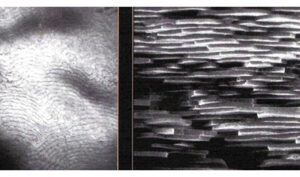
- Fingerprint-like surface ridges (above, left) characterize both natural and cultured pearls. These features, easily seen under magnification, assist in differentiating pearls from glass, plastic, or fish-scale imitations. This slight texture is what you feel when you touch a pearl to your front teeth.
- Most of a saltwater cultured pearl is a shell sphere nucleus implanted pearl as an irritant inside a life oyster. The quality and durability of the resulting pearl is mainly determined by the number and quality of nacre layers the oyster produces to cover that nucleus. Other quality concerns are secondary to nacre thickness, which is the key to how long a pearl will last..

- Nacre thickness is determined by studying either x-rays or cultured pearl drill boles (right). There is a distinct color and texture difference where the nacre coating meets the shell-bead nucleus. In the examples below, the small pearl is adequately coated, but the 0.20mm – nacre coating will not last. Too many such pearls are being sold to unsuspecting buyers. And the backlit whole pearl (below, right) has so little nacre that the shell striations show through clearly. A coating that thin will flake off within months.
![]()
Nourish them
Your Pearls need professional cleaning at least once a year, depending on usage. If worn frequently, cultured pearl jewelry should be cleaned and/or restrung professionally once a year. You can also;

- Wipe the pearls with a soft cloth after wearing them
- Wash occasionally in soapy water. Human Perspiration can damage your pearls
- Please take the following precautions to ensure the longevity of your pearls’ beauty and luster
- Store pearls in a soft cloth sack, or a case recommended by your jeweler. Always separate them from metallic necklaces.
- Never use chemical cleaners or varnishes, especially those that contain ammonia or bleach.
- Remove pearls before applying perfume or sprays and before washing dishes or doing housework.
- Keep your pearls away from foods containing acids, for example fruit juice.
- Expose pearls regularly to humid conditions. If stored in a safe, place a glass of water in the compartment with them.
- Do not wear pearls in swimming pools.
- Sometimes, damaged or stained pearls can be restored to their natural beauty. While it is a risky process, it might help you salvage a beautiful gem.
Own Them
From JPEARLS

